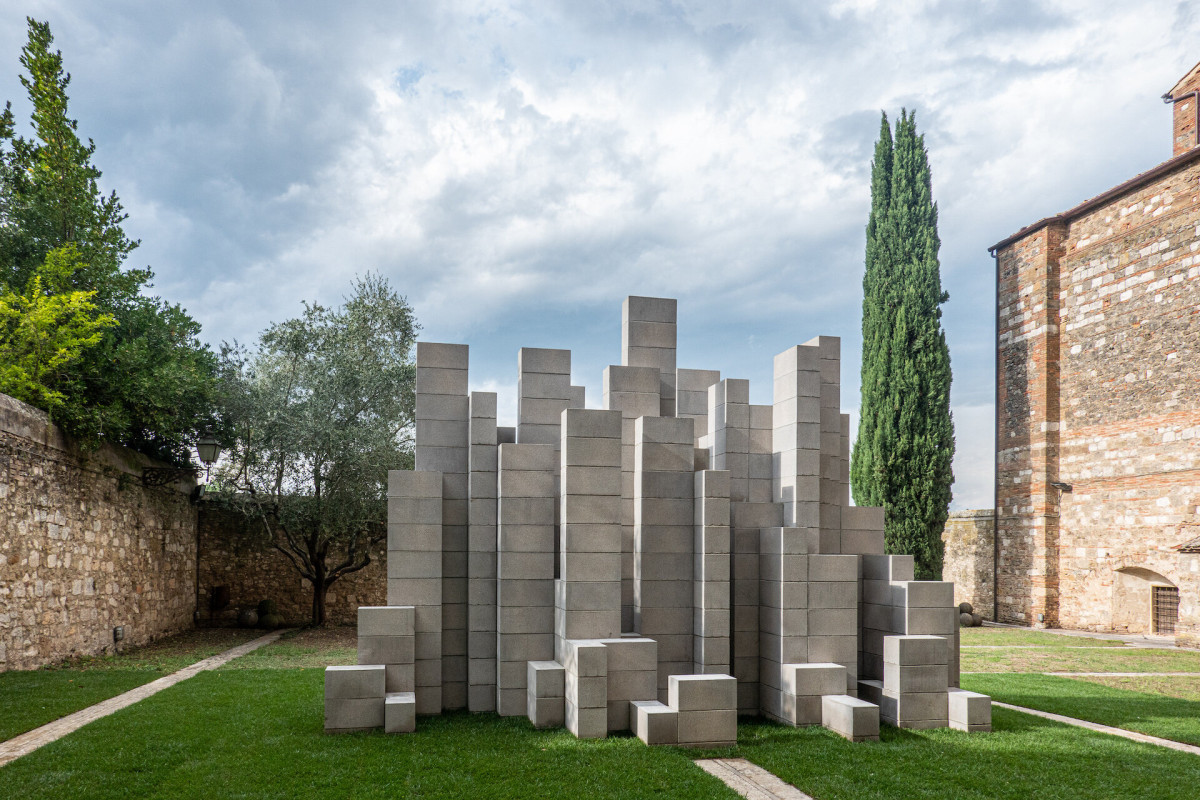Associazione Arte Continua compie trent’anni e li celebra con un doppio appuntamento. La re-installazione, in forma permanente, di una delle opere che hanno costellato lo splendido percorso di Art to Art. E la visita di alcune opere che, grazie a questo progetto, sono rimaste patrimonio pubblico delle città.
"Concrete Blocks” – l’installazione che Sol LeWitt concepì nel 1997 per Colle di Val d’Elsa quando prese parte alla seconda edizione di Art to Art – quell’anno curata da Giacinto di Pietrantonio e da Jan Hoet – tornerà ad essere ospitata nel giardino del Palazzo Pretorio della città, luogo per il quale l’artista l’aveva pensata e realizzata. La re-installazione di Concrete Blocks sarà inaugurata ufficialmente domenica 27 settembre 2020 alle ore 10.
L’impegno profuso da Associazione Arte Continua, dall’Amministrazione Comunale di Colle di Val d’Elsa e dalla Fondazione Sol LeWitt rende oggi possibile la ricollocazione in forma permanente di Concrete Blocks nel luogo per il quale l’artista l’aveva concepito, il Palazzo Pretorio di Colle di Val d’Elsa sede del Museo Archeologico della città. “Seguendo la volontà dell’artista abbiamo deciso di coinvolgere maestranze locali, quali l’Edilcostruzioni che si è occupata della realizzazione dell’opera e Unibloc, la stessa ditta che nel 1997 fornì i blocchi di cemento che composero l’opera originale di Sol Lewitt” spiega Mario Cristiani. E prosegue “Mio padre era muratore e anch’io da giovane ho messo quei blocchi, so che sono friabili, ma il senso di questo lavoro è che ogni singola unità, anche se parte friabile e povera, può esser nobile e importante, perché la sua essenza lo è … perché non è il materiale a render nobile qualcosa ma la cura e l’amore che ti chiede per crescere”.
La re-installazione dell’opera di Sol LeWitt rappresenta la volontà di Associazione Arte Continua di riprendere e continuare il discorso, in realtà mai del tutto interrotto, di Art to Art e del suo lavoro sul distretto di Architettura – Arte contemporanea – Campagna.
Sol LeWitt was invited by curators Jan Hoet and Giacinto di Pietrantonio to create a permanent work in the courtyard of the Museum of Colle Val d’Elsa.
“…If what passes from form follows the function of the modernists, then after form follows the idea of the conceptualists.
Today’s architects don’t hold ziggurats in high regard… Ironically, the new Whitney Museum is an inverted ziggurat—highly praised—while office buildings are not considered particularly elegant… perhaps, then, this could be the right time to reconsider ziggurats. Many of them may eventually be recognized as valuable works of art.
Ziggurats themselves recall many of his works, from the modular structures to more recent sculptures such as the piece exhibited at the Giardini of the Venice Biennale, or the one built in the courtyard of the Museum of Colle Val d’Elsa.
A work of art involves many elements; the most important ones are the most evident.
They reveal a rhythm and an organization of basic geometric elements, such as the parallelepiped, that suggest a constructive system—which LeWitt swears, this time, does not exist. If that impression arises, it means the artist’s purpose—the idea before the form—has nonetheless been achieved. They recall ancient architectures—Aztec, Mayan—and the form and structure of modern cities—New York, Hong Kong—and the artist agrees. That seriality and standardization do not necessarily generate identical forms and images, but rather different ones.”
Jan Hoet, Art to Art II, 1997

